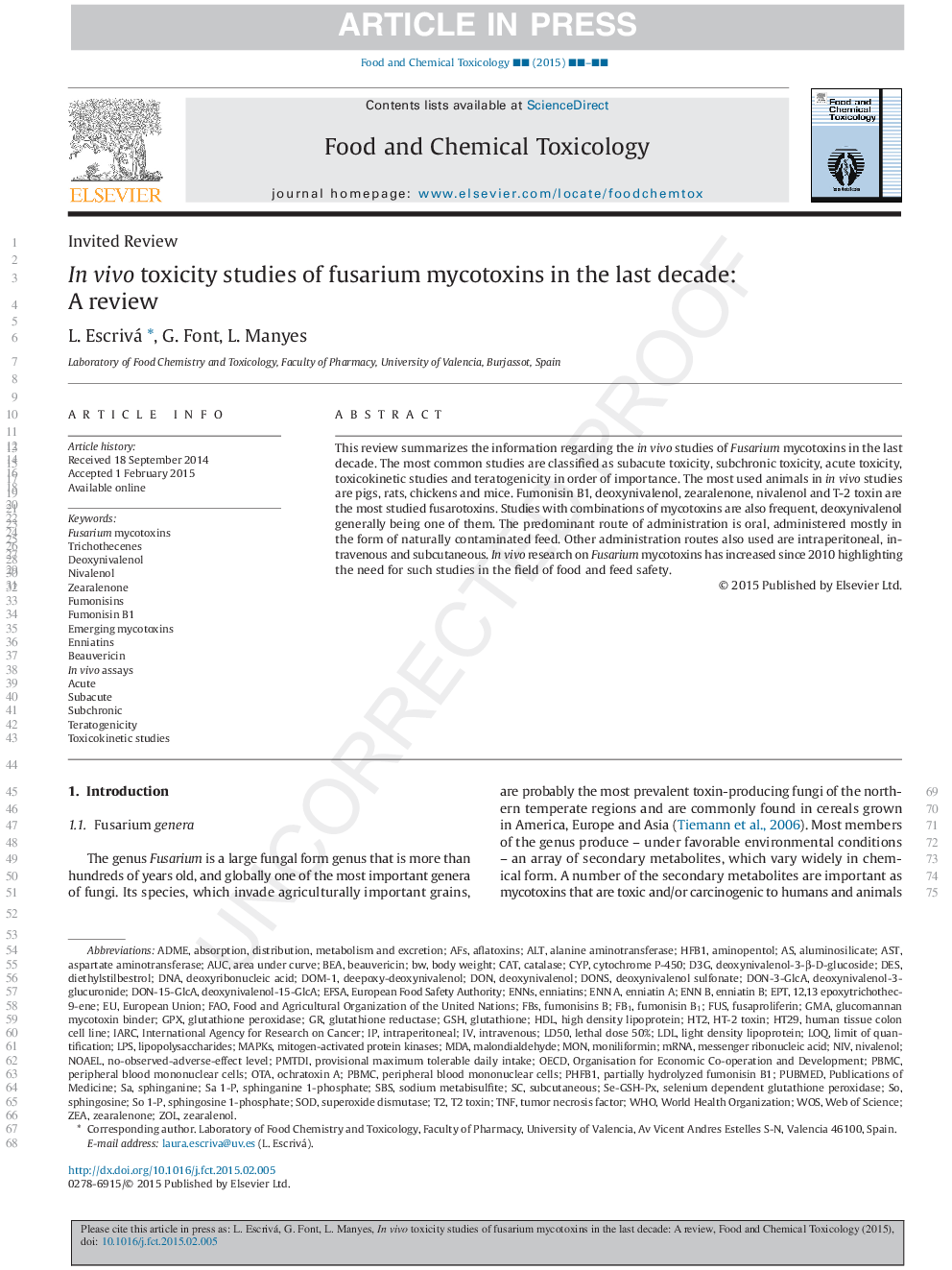| Article ID | Journal | Published Year | Pages | File Type |
|---|---|---|---|---|
| 5849899 | Food and Chemical Toxicology | 2015 | 22 Pages |
Abstract
This review summarizes the information regarding the in vivo studies of Fusarium mycotoxins in the last decade. The most common studies are classified as subacute toxicity, subchronic toxicity, acute toxicity, toxicokinetic studies and teratogenicity in order of importance. The most used animals in in vivo studies are pigs, rats, chickens and mice. Fumonisin B1, deoxynivalenol, zearalenone, nivalenol and T-2 toxin are the most studied fusarotoxins. Studies with combinations of mycotoxins are also frequent, deoxynivalenol generally being one of them. The predominant route of administration is oral, administered mostly in the form of naturally contaminated feed. Other administration routes also used are intraperitoneal, intravenous and subcutaneous. In vivo research on Fusarium mycotoxins has increased since 2010 highlighting the need for such studies in the field of food and feed safety.
Keywords
ADMED3GALTEFSAEnniatinsDeoxynivalenolFusaproliferinFB1HFB1DOM-1GPXGSHEPTGMAHDLCyPAFSCATdeoxynivalenol-3-glucuronideBEAEnniatin ALD50HT29FBSHT2AUCDNAEnniatin BFUsHT-2 toxinASTAspartate aminotransferaseAflatoxinsAlanine aminotransferaseAluminosilicateaminopentolInternational Agency for Research on CancerIARC یا International Agency for Research on CancerEuropean UnionEuropean Food Safety AuthorityDESdeoxyribonucleic acidBeauvericinabsorption, distribution, metabolism and excretionintraperitonealIntravenouslethal dose 50%DONDiethylstilbestrolFood and Agricultural Organization of the United Nationscytochrome P-450FAOFumonisin B1high density lipoproteinLDLarea under curvebody weightCatalaseGlutathioneglutathione reductaseglutathione peroxidase
Related Topics
Life Sciences
Agricultural and Biological Sciences
Food Science
Authors
L. Escrivá, G. Font, L. Manyes,
